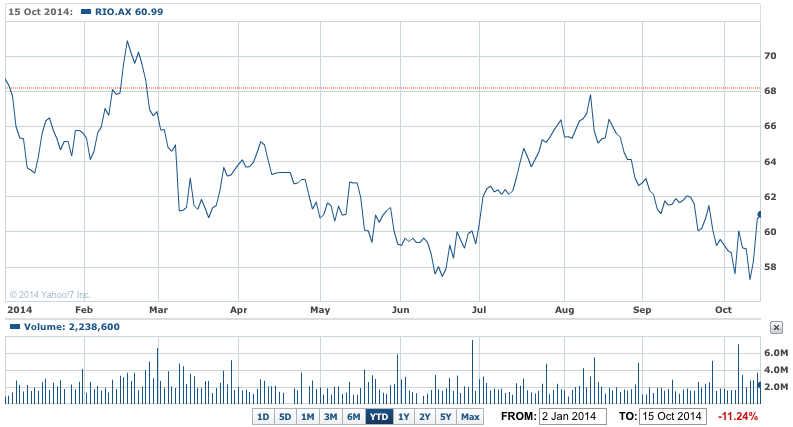Rio Tinto (RIO) CEO Sam Walsh has rejected criticism of his company’s policy of continuing to expand iron ore production and sales in the face of weak prices and sluggish demand. That policy is also one being pursued by Rio’s great rivals, BHP Billiton (BHP) and Vale of Brazil. It’s earned the two Australian miners criticism from some investors, analysts and the Western Australian premier, Colin Barnett.
But speaking in Sydney yesterday after Rio released its third quarter production and sales figures, Mr Walsh rejected the criticism, saying demand is still strong because of “the long-term outlook for the business whether it’s iron ore or whether its copper or aluminium or any of the commodities as the world continues to urbanise and industrialise.
"Its a cyclical industry: we go through cycles we shouldn’t panic when there’s a blip in iron ore pricing," he said, saying the fundamentals were still "very very strong" given the urbanisation and industrialisation that would follow China’s in India, south-east Asia,the Middle East, South America and Africa.
In the company’s statement, Mr Walsh stated; “We have delivered another strong quarter with record iron ore production and a solid performance in copper and aluminium. We have seen our first full quarter from the 290 Mt/a iron ore expansion in the Pilbara, with the additional tonnes going into our premium Pilbara Blend products.
“Our strategy of focussing on long-life, low-cost assets means we will continue to generate strong cash flows despite a lower price environment, resulting in materially increased and consistent cash returns to shareholders.”
Rio Tinto rose 0.4% to $60.99, while BHP Billiton added 1.1% to $33.80. It releases its September quarter figures next week.
RIO YTD – Rio defiant on iron ore

Rio posted a 12% rise in September quarter production to 76.8 million tonnes, compared to the same time last year. The company’s share of sales from its WA mines jumped 14% to 73.7 million tonnes, an all time high.
The miner also increased its copper production guidance for the full year.
Rio’s report revealed it has produced 216.2 million tonnes in the nine months to September, up 12% on the same period last year. Rio’s equity share of that production was 170.3 million tonnes.
The miner is forecasting production of 295 million tonnes for the current year (ending December 31), from its operations in the Pilbara and Canada, which should increase again to least 330 million tonnes in calendar 2015.
Rio hit a 290 million tonne run rate target in May, two months ahead of schedule, marking the completion of the first phase of its dramatic expansion from 210 million tonnes to 360 million tonnes.
Rio Tinto has increased its copper guidance for the year, to 615,000 tonnes of mined copper, up from 585,000 tonnes, and refined copper production of 300,000 tonnes, previously 260,000.
The company said copper output was slightly higher on-year, rising 1% to 151,800 tonnes as production rose at Escondida – the world’s largest copper mine in Chile, owned jointly with BHP Billiton Ltd. and a Japanese consortium.
Rio also reported a 3% on-year decline in the production of bauxite, to 10.9 million tonnes in the third quarter. Hard coking coal output was down 14% on-year at 1.9 million tonnes.













